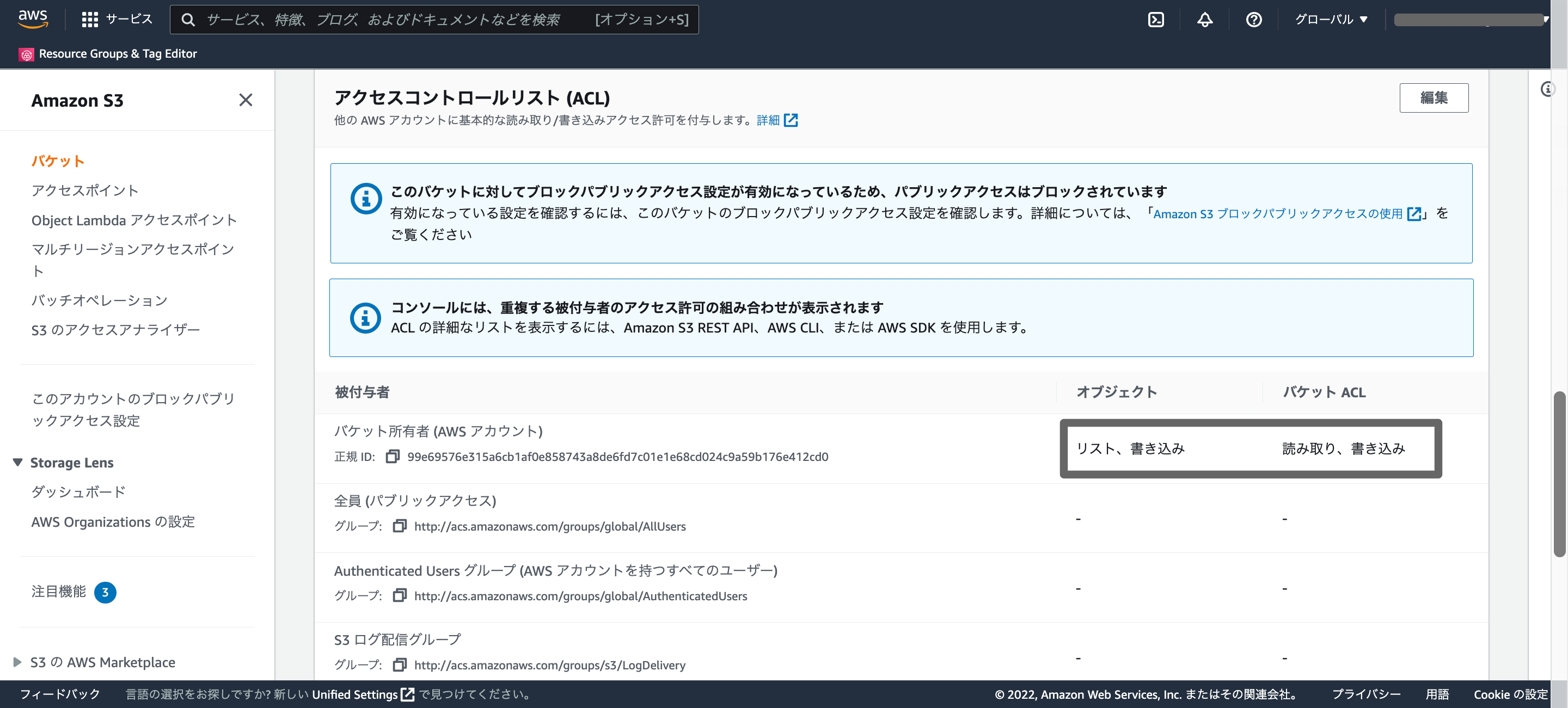1. Introduction
Hello! We are a writer team from Definer Inc.
In this issue, you are wondering about the use of the basics of S3 Access Control Lists (ACLs).
Let's take a look at the actual screens and resources to explain in detail.
2. Purpose/Use Cases
This article provides a collection of information and practices to help you understand the basics of S3 Access Control Lists (ACLs).
3. What is an S3 Access Control List (ACL)?
An S3 Access Control List (ACL) is a feature that allows you to manage access to buckets and objects.
S3 buckets and objects have ACLs attached to them as sub-resources, which define the access source (e.g., AWS account) and allowed actions (e.g., Read/Write).
✅About the access source
Access source can be classified into the following types.
・AWS account
No need to explain, access can be managed per AWS account.
・Any user / AWS account
Allow access from anywhere in the world / from any AWS account.
When configuring this setting, please be careful about the public range, etc.
・S3 server access log
This is the source of the S3 access log, which is managed by AWS.
To enable the S3 server access log, access must be allowed.
✅About access permissions
There are five types of access permissions
The range of permissions varies depending on whether the ACL is applied to a bucket or an object.
・Read
In the case of a bucket, a list of objects in the bucket
In the case of an object, the corresponding object data
・Write
In the case of a bucket, new creation, editing, and deletion of objects
In case of object, not applicable
・Read_ACP
In the case of a bucket, reference to the ACL applied to the bucket
In the case of an object, reference to the ACL applied to the object
・Write_ACP
In the case of a bucket, modification of the ACL applied to the bucket
For an object, change the ACL applied to the object
・Full_Control
In the case of a bucket, all of the above permissions for the bucket
For objects, all the above privileges for the object
4. How to check S3 Access Control List (ACL)
Now, let's check the actual S3 Access Control List (ACL) settings.
(1) Log in to the AWS console and access the S3 screen.
(2) Click the bucket for which you want to check the ACL, and go to the "Access Permissions" tab.
(3) Scroll down to "Access Control List (ACL)" at the bottom of the screen.
Checking the screen, you will see the following.
・Read and write access to buckets and objects is allowed from the user's AWS account.
・Access from outside the account is neither Read nor Write.
・S3 server access logs are not written.


5. Cited/Referenced Articles
What is Amazon S3 - Amazon Simple Storage Service
Recommended Access Control Methods | Cloud Storage | Google Cloud
AWS Resource Groups and Tags - User Guide
Amazon Simple Storage Service - User Guide
Recommended Access Control Methods | Cloud Storage | Google Cloud
What is Amazon S3 - Amazon Simple Storage Service
Amazon Simple Storage Service - User Guide
6. About the proprietary solution "PrismScaler"
・PrismScaler is a web service that enables the construction of multi-cloud infrastructures such as AWS, Azure, and GCP in just three steps, without requiring development and operation.
・PrismScaler is a web service that enables multi-cloud infrastructure construction such as AWS, Azure, GCP, etc. in just 3 steps without development and operation.
・The solution is designed for a wide range of usage scenarios such as cloud infrastructure construction/cloud migration, cloud maintenance and operation, and cost optimization, and can easily realize more than several hundred high-quality general-purpose cloud infrastructures by appropriately combining IaaS and PaaS.
7. Contact us
This article provides useful introductory information free of charge. For consultation and inquiries, please contact "Definer Inc".
8. Regarding Definer
・Definer Inc. provides one-stop solutions from upstream to downstream of IT.
・We are committed to providing integrated support for advanced IT technologies such as AI and cloud IT infrastructure, from consulting to requirement definition/design development/implementation, and maintenance and operation.
・We are committed to providing integrated support for advanced IT technologies such as AI and cloud IT infrastructure, from consulting to requirement definition, design development, implementation, maintenance, and operation.
・PrismScaler is a high-quality, rapid, "auto-configuration," "auto-monitoring," "problem detection," and "configuration visualization" for multi-cloud/IT infrastructure such as AWS, Azure, and GCP.

